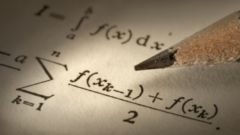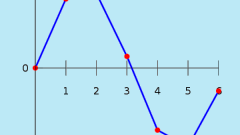Instruction
1
To find change of any quantity, measure or calculate its initial value (x1).
2
Calculate or measure the final value of the same magnitude (x2).
3
Way to change this value according to the formula: Δx=x2-x1. For example: the initial value of the electric circuit voltage U1=220 V and the final value U2=120V. The change in voltage (or Delta voltage) will be equal to ΔU=U2–U1=220V-120V=100V
4
For finding the absolute error of measurement determine the exact or as it is sometimes called, the true value of any quantity (x0).
5
Take the approximate (measured – measured) value of the same variable (x).
6
Find the absolute error of measurement according to the formula: Δx=|x-x0|. For example: the exact number of residents - 8253 resident (x0=8253), rounding that number to 8300 (approximate value of x=8300). The absolute error (or Delta x) will be equal to Δx=|8300-8253|=47, and rounding up to 8200 (x=8200), the absolute error Δx=|8200-8253|=53. Thus, rounding to the number 8300 will be more accurate.
7
To compare the values of the function F(x) in a strictly fixed point x0 with the values of this function at any other point of x lying in the vicinity of x0, it uses the concept of "increment function" (ΔF) and the "increment of the argument of the function" (Δx). Δx is sometimes called the "increment of the independent variable". Find the increment of the argument by the formula Δx=x-x0.
8
Determine the function values at the points x0 and x and denote them respectively F(x0) and F(x).
9
Calculate increment of the function: ΔF= F(x)- F(x0). Example: to find the increment of the argument and increment of a function F(x)=x2+1 when you change the argument from 2 to 3. In this case, x0 is equal to 2, and x=3.
The increment of the argument (or Delta x) is Δx=3-2=1.
F(x0)= х02+1= 22+1=5.
F(x)= x2+1= 32+1=10.
The increment of the function (or Delta EF) ΔF= F(x)- F(x0)=10-5=5
The increment of the argument (or Delta x) is Δx=3-2=1.
F(x0)= х02+1= 22+1=5.
F(x)= x2+1= 32+1=10.
The increment of the function (or Delta EF) ΔF= F(x)- F(x0)=10-5=5
Note
You need not subtract a larger number from a smaller, and from the final value (not important: it more or less) elementary!
Useful advice
When finding all values of Δ do not use the same unit of measure.









